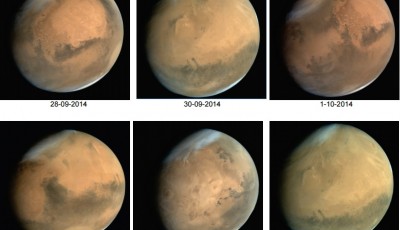On Its First Birthday, Mangalyaan Flaunts Stunning Images of Mars
With the success of this mission, India secured a place in the elite global space club of Martian explorers.
The Mars Orbiter Mission (MOM) spacecraft, also known as Mangalyaan, arrived at the Red Planet on the night of September 23, 2014 (Sept. 24 GMT and Indian Standard Time), just two days after NASA’s Mars Atmosphere and Volatile Evolution probe (MAVEN) reached Mars orbit.
Mangalyaan, India’s maiden mission to Mars, completed a year in space today and as part of the first anniversary celebrations, the Indian Space Research Organisation (ISRO) has launched a ‘Mars Atlas’ in Bengaluru.
“The Martian is far more realistic and screening it was our way of congratulating the scientists on the first anniversary of the Mars Orbiter Mission”.
The Space Applications Centre, (ISRO), Ahmedabad, has brought out the Mars Atlas which contains a compilation of images acquired by Mars Colour Camera (MCC) and results obtained by other payload results, the space agency said. “India is the only country to get on Mars in its first attempt”, says Sunder Kimatrai, EVP Asia Pacific, Twentieth Century Fox from his Australian office.
Like any normal atlas, the Mars atlas also has images arranged according to the Martian surface and atmospheric processes.
ISRO released this stunning image of Taytay Crater on Mars, captured by its Mars Colour Camera onboard Mars Orbiter spacecraft. “Mars (mission) is expected to last for many years now, because it has gone through solar conjunction also; so we don’t see much of a problem”, ISRO Chairman AS Kiran Kumar had said, adding “we had planned it only for six months”.
One of the primary objectives of the first mission to Mars is the development technologies required to design, plan and manage interplanetary missions. The orbiter has limited fuel, but should be able to orbit for several more years with the remaining propellant.
The images from MCC provide unique information about Mars at varying spatial resolutions.
Earlier in March, MOM’s life was extended for another six months due to surplus fuel.









